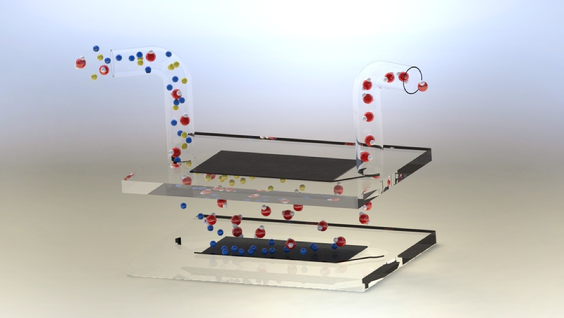Electrode modification for capacitive deionization
Introduction
Potable water as well as irrigation water is produced from natural water sources such as wells, which are limited available. With an increasing world population and a scarcity of water resources, attention for alternative production methods of potable water is growing. Ocean water is abundantly available and techniques such as reversible osmosis, electro dialysis or distillation are applied to desalinate this salty water. A major drawback is the fact that each of these methods require high amounts of energy, due to the need of high pressures or temperatures.
Capacitive deionization
A promising method to desalinate water without the usage of membranes and accompanied need for operation at high pressures is capacitive deionization. Capacitive deionization is based on the principle that the cations and anions in a salt solution will be attracted to oppositely charged electrodes.

Figure 1 Capacitive deionization
This technique is specifically interesting for portable desalination units. We focus on water transport on the nanoscale and the enhancement of the storage capacity of ions at the electrodes.
